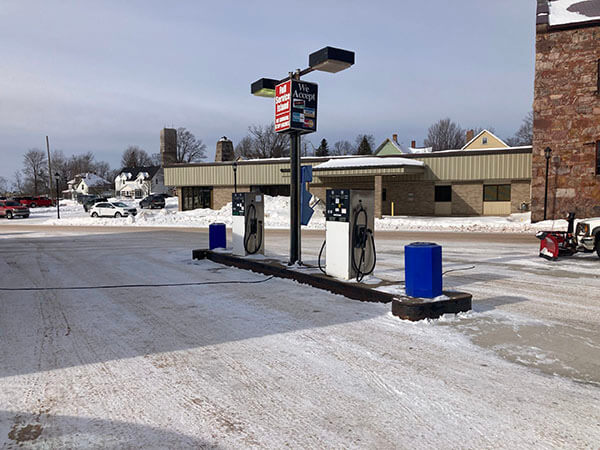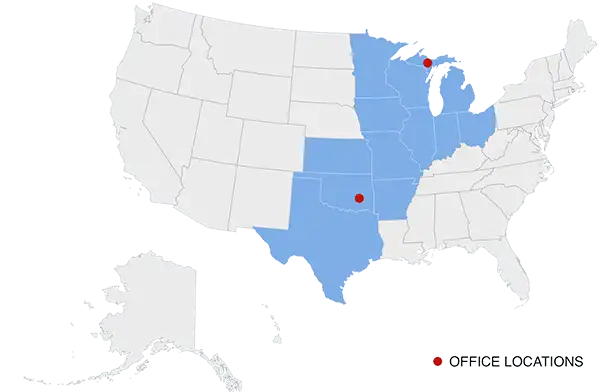Our company is licensed and qualified to perform Baseline Environmental Assessments (BEAs) in accordance with laws and regulations of the State of Michigan. We have conducted these assessments for property buyers and investors throughout the Great Lakes State who want legal protection under Michigan’s Part 201 (Environmental Remediation) and Part 213 (Leaking Underground Storage Tanks).
We cover the entire State of Michigan and are ready to dispatch an environmental engineer.
- Are you ready to conduct a Baseline Environmental Assessment? Contact us and let us get started.

Our Baseline Environmental Assessment Service
We will dispatch a licensed environmental engineer to visit the property and conduct a Baseline Environmental Assessment based on the requirements and standards outlined under Michigan’s Part 201 and Part 213 statutes (Natural Resources and Environmental Protection Act, 1994 PA 451)…
- Our BEA services evaluates past property use as well as future property use based on hazardous material occurrence and hazardous substance release.
- We conduct the BEA service as quickly as possible based on the State of Michigan’s 45-day window from the date of the (AAI) ATM Phase I Environmental Site Assessment or the date of the sale.
- We provide you with the written BEA documents with which you submit to the State of Michigan, Department of Environment, Great Lake, and Energy (EGLE)
- The report includes a Document of Due Care Compliance (DDCC) section that includes Measures to Mitigate Unacceptable Exposure and Prevent Exacerbation of Impact, Reasonable Precautions, Property Use, Proposed Remedial Action, and/or Engineering Controls as Necessary for Compliance.
What is a Baseline Environmental Assessment?
A Baseline Environmental Assessment is a study conducted by a licensed environmental engineer of a plot of real estate where contamination was found in excess of limits established by the Department of Environment, Great Lakes and Energy (EGLE). Legally, the burden of liability would transfer to the new owner of the property. However, the State of Michigan enacted a law entitled, “Natural Resources and Environmental Protection Act, 1994 PA 451” that will relieve the burden of liability if the new owner conducts a Baseline Environmental Assessment and files the report to EGLE.
A BEA must be conducted prior to or within 45 days after becoming the owner or operator of a contaminated property. This assessment is documented as part of an AAI or ATM Phase I Environmental Site Assessment (ESA) and ATM Phase II Environmental Site Assessment. A BEA describes future operations to be conducted at the site and describes the sampling and analysis completed that demonstrates the property is contaminated above unrestricted Residential criteria (often determined by completing a Phase II ESA).
By hiring an environmental engineer to create a Baseline Environmental Assessment, and filing it on time with EGLE, the new property owner will be protected from liability and the cost of remediation.
When Must a Baseline Environmental Assessment be Conducted?
- A BEA must be conducted within 45 days of the purchase, occupancy or foreclosure of a contaminated property (i.e., becoming an “owner” or “operator”)
- The BEA must be submitted to the state within six (6) months from the date of purchase, occupancy or foreclosure.
- The BEA must be made available to future purchasers or transferees.
When is a Baseline Environmental Assessment is Necessary?
When the information contained within an ATM Phase I Environmental Site Assessment (ESA) and ATM Phase II Environmental Site Assessment discloses levels of contaminants that exceed limits outlined by the Department of Environment, Great Lakes and Energy (EGLE), you should contact an environmental engineering firm (such as our company) to conduct a Baseline Environmental Assessment.
- You have 45 days from the completion of an ATM Phase I ESA, or from the date of sale of the property, to conduct a BEA.
- Failure to complete a BEA and submit to EGLE means you will become fully liable for contaminants found on your new property.


